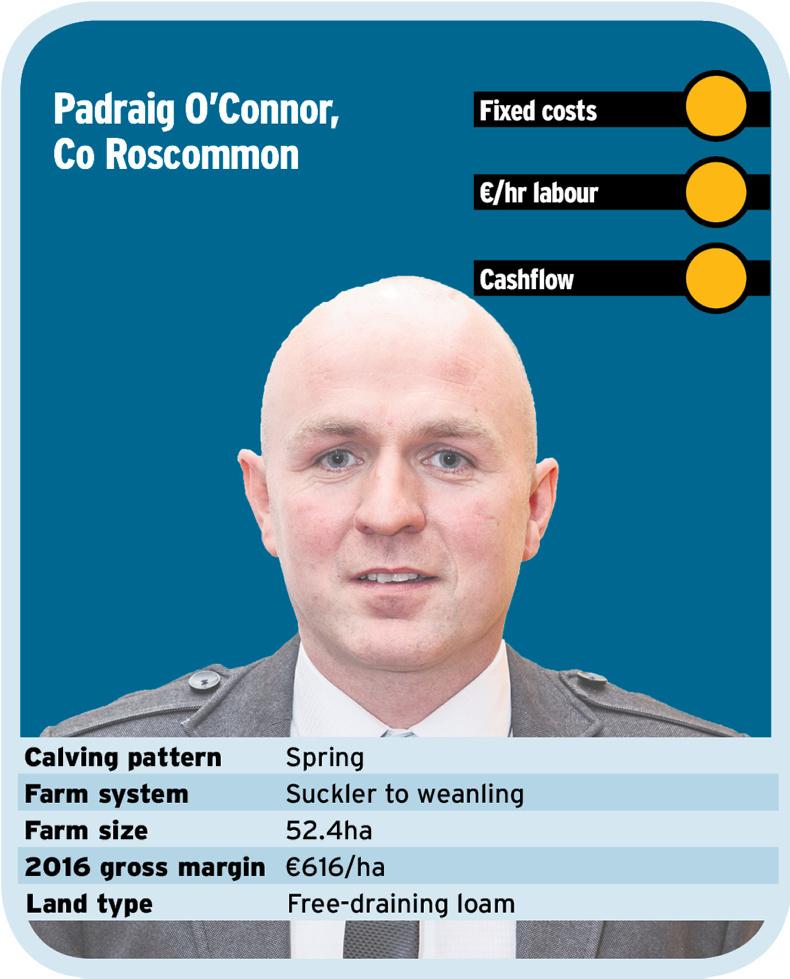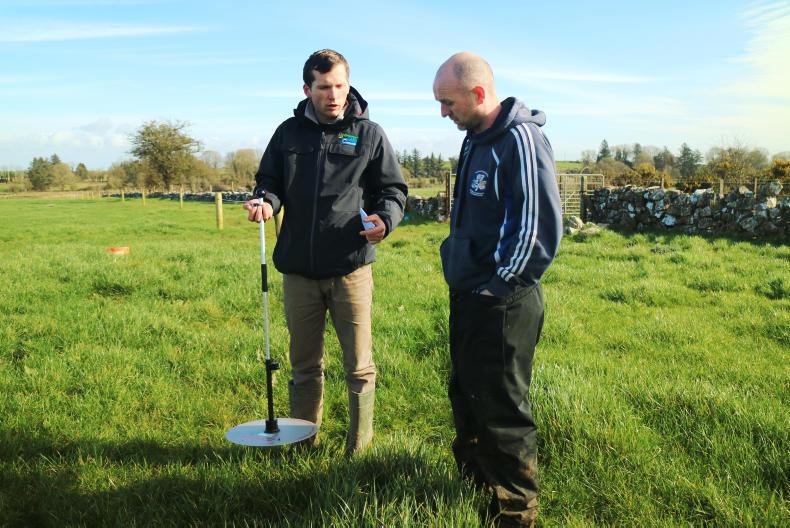
Padraig O’Conner farms 52ha at Knockcroghery in Co Roscommon. His 52 cows calve in the spring and he favours a second-cross Limousin or Angus from the dairy herd.
In recent years, he has also kept some beefier replacements from Saler and Limousin stock bulls. Last year, a Charolais bull also worked the cows, producing animals for sale and slaughter.
In the coming years of the BETTER farm programme, Padraig plans to go with Limousin sires across the board – sourcing two more bulls. He will replace his Charolais with a high-maternal-index Limousin bull before breeding 2017 kicks off. The new bull will run with his 20 best cows in order to produce replacements.
Up to now, there has been no defined system on the Knockcroghery farm regarding male calves. While heifers have typically been slaughtered in recent years, males could have been sold live in October as weanlings or brought through to beef as steers, depending on cash constraints and prevailing prices.
Moving forward, Padraig will finish all of his male progeny and continue finishing his heifers. In an effort to boost cashflow during the summer months, Padraig’s best 10 to 12 bulls will escape the burdizzo this back-end.
These will be targeted for a mid-summer 2018 finish, under 16 months of age. Beef price at this time is typically strong relative to the shoulders of the year and provided Padraig does indeed meet age and carcase weight specifications, these animals will be eligible for conformation and quality assurance bonuses.
Fertiliser
As the programme progresses, Padraig plans to grow his suckler herd to 60 cows. In 2017, the stocking rate will be modest but the fact that he will keep all of his stock through to slaughter from here on in, and operate a steer-beef system, means he needs to place a big focus on his grassland management.
Indeed, 2017 will be about getting his pH (lime), phosphorus (P) and potassium (K) ducks in a row so that things can be driven on from 2018.
Padraig’s BETTER farm adviser John Greaney, in conjunction with local B&T adviser James Kelly, have put a plan in place for the farm based on Padraig’s soil test results. Lime and compound fertilisers feature prominently on the menu, which is designed with cashflow in mind. The plan below is an excerpt from Padraig’s overall farm nutrient plan.
The immediate agenda
Padraig’s immediate concern is his silage ground. In the coming days and weeks he will close and fertilise, with a view to taking his main first cut as close to 20 May as possible. It is vital that he gets his silage ground grazed out as soon as he can. Yellow, dead material has accumulated in the base of the sward during the winter, the feeding value of which will be well back on the younger grass above it. This is not what Padraig wants going into the silage harvester. Removing it now and fertilising will bring on highly digestible material behind it in time to be picked up in the last weeks of May.
While spring-calving cows can be “roughed” slightly during the winter when it comes to feeding, other stock cannot. Padraig will be pushing his finishing steers on hard and trying to grow frame on his weanlings without breaking the bank with concentrates. Making top-class silage will help him do both. Harvest date is the number one factor affecting silage digestibility. If Padraig closes up on 1 April, each week beyond his targeted 20 May cutting date will see a decline in digestibility of 3.3%. To offset this drop in digestibility, Padraig would require an extra 1kg of concentrates per head daily to achieve the same performance. In a five-month winter, that is an extra cost of almost €2,000.
While first-cut silage yield will be 10-15% lower where fields are grazed beforehand, versus un-grazed plots, farm forage production will be the same. The material that would have gone into the clamp or bale goes straight into the animal instead in the form of grazed grass.
Adviser comment John Greaney
Although Padraig is growing enough grass for his current stocking rate of 1.5LU/ha the plan is to eventually finish all progeny on the farm. The farm has great potential, but for Padraig to increase his beef output he has to look at doing so from grass. Every extra tonne of grass utilised on drystock farms is worth an additional €105 net profit.
The soil fertility on the farm is varied and the heavy covers that exist on the farm at present are all on fertile soils having a correct pH and index 3 or 4 for P and K - the proof really is in the pudding. Padraig will make the most out of his slurry and if cashflow is there in the backend of the year it will be pumped into getting the indexes off the floor. Lime will be ordered in the coming days, targeting some of the barer grazing ground. The remainder will be spread in the autumn.












SHARING OPTIONS